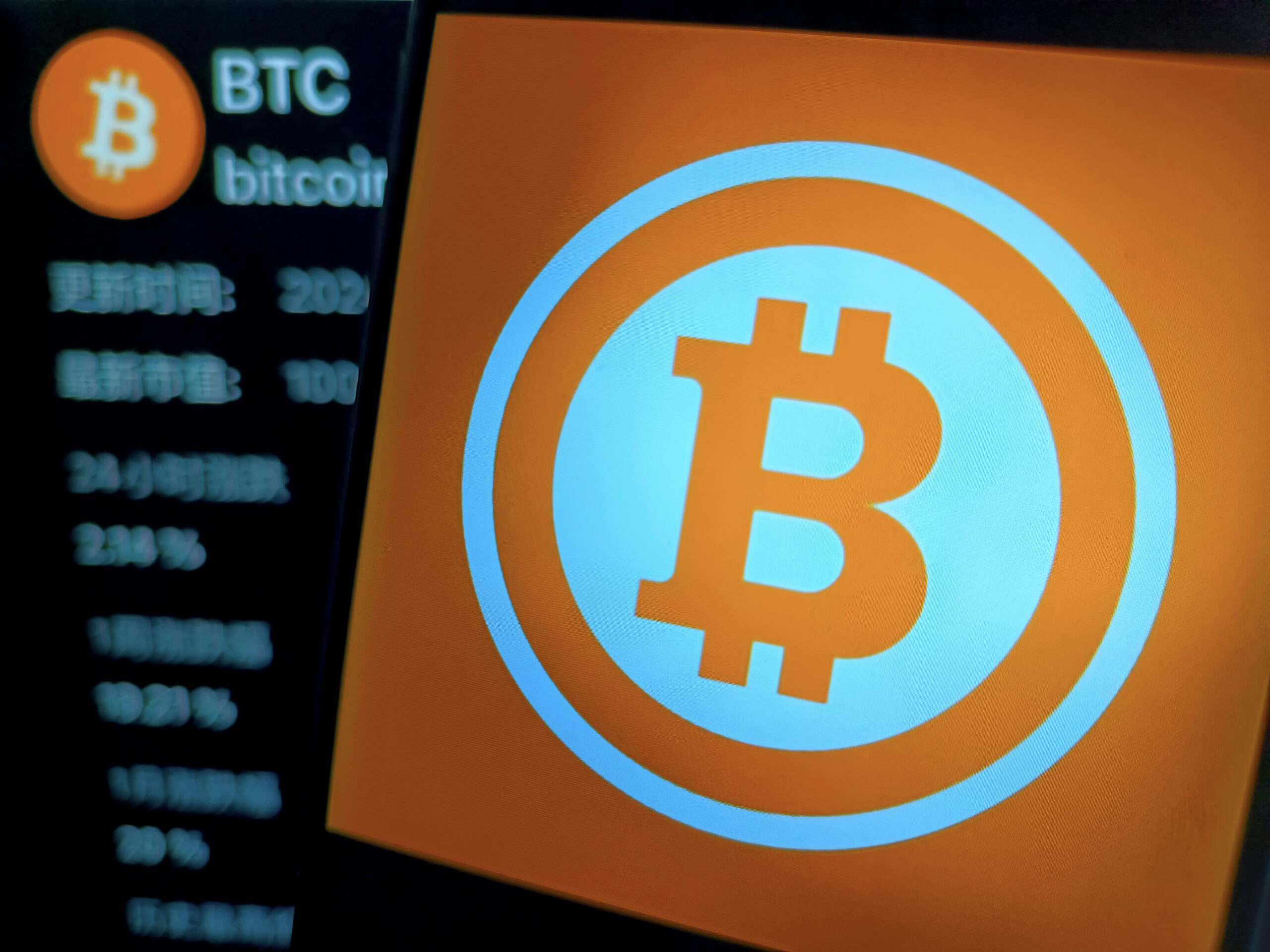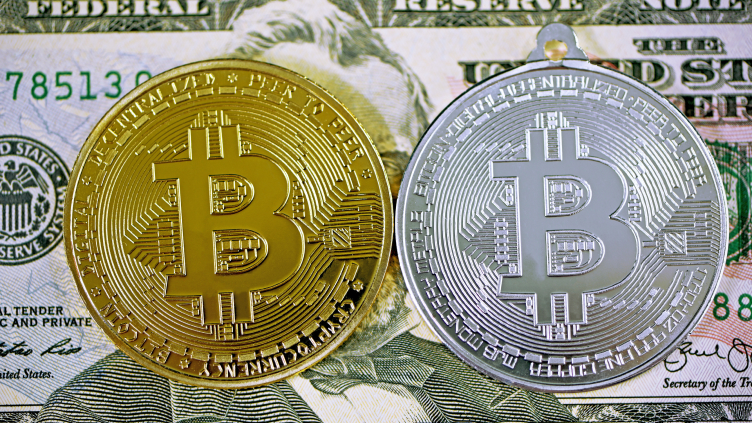Bitcoin
3 Stablecoin Headlines Investors May Have Missed

Stablecoins are quietly becoming even more important to the crypto industry
AFP via Getty Images
There has been no shortage of headlines and talk about crypto assets recently, generating both positive and negative price momentum for the sector. As the Mt. Gox and German government liquidations proceeded in a seemingly orderly fashion, these actions put significant pressure on the price of Bitcoin, which briefly dipped below $58,000. That said, as these liquidations continued, price support at these levels held, indicating that even after an initial bout of fear caused by this selloff, investors remain confident in the medium- to long-term price outlook. JP Morganfor example, expects the sell-off and price pressure to be completed by the end of July, followed by a market recovery in August. Crypto predictions are notoriously difficult to get right, but they serve as an example of market sentiment.
Additionally, cryptocurrency continues to play an increasingly prominent role in political conversations, with the Biden Administration holding high-level meetings with cryptocurrency industry leaders and advocates in an attempt to shore up support in what has emerged as an opportunity to sway undecided voters. On the other side of the aisle, former President Trump announced a 30-minute presentation on Bitcoin 2024one of the largest and most significant crypto conferences in the United States. With all of this going on, it would be reasonable for investors and advocates to focus on these items, but that would ignore several important points.
Let’s take a look at some headlines and stories that cryptocurrency investors may have overlooked.
The SEC continues to vacillate
While Binance and CZ have each pleaded guilty to criminal activity, paid fines in the billions, and are facing significant legal challenges going forward, the SEC has recently suffered a legal setback over additional efforts connected to Binance. The SEC recently concluded its investigation into Paxos – the issuer of the Binance USD stablecoin – without recommending any enforcement action. The lack of enforcement action alone should be seen as celebratory news for Paxos, but it could also have broader implications for cryptocurrency regulation.
As the SEC continues to face mounting resistance and legal challenges to its ongoing efforts to classify the entire cryptocurrency sector as securities, stablecoins are poised to benefit. Especially since these crypto assets — nearly all of which are backed 1:1 by USD — were purposefully built and intended to be used as a medium of exchange rather than an investment vehicle, these setbacks could provide some much-needed breathing room for more objective conversations on the topic.
PayPal Stablecoin Continues to Grow
After a somewhat low-key launch that was almost immediately marred by an SEC investigation into the stablecoin itself, PayPal’s stablecoin efforts have continued. A recent integration with the Solana blockchain has led to a surge in the token’s market cap, which recently surpassed 500 million dollars. Data from DeFillama shows that the total supply across the existing Ethereum blockchain is approximately $399 million, or 77% of the total supply with the remaining amount in Solana. Furthermore, the supply increased rapidly — by 58% during the first week of integration — on Solana, while it fell by 6% on Ethereum.
Furthermore, the integration with Solana has also led to substantial growth in DeFi platforms and the DeFi ecosystem at large, with availability on both the Jupiter and Orca DEX, as well as inclusion on the Kamino Finance lending and liquidity protocol. Given the household name recognition that PYUSD has, coupled with the growth resulting from the Solana integration, it seems that PayPal and PYUSD appear poised for continued growth and utilization.
State-backed stablecoins are coming fast
While the federal government continues to swing back and forth regarding cryptocurrency regulation and standard-setting, individual states continue to lead the way. Building on previous efforts, the state of Wyoming has announced its intention to launch a state-backed stablecoin in 2022. After dealing with some resistance and legislative difficulties, an announcement was made in May 2024 that the minting of the state-backed token was underway. The token, which is backed on a 1:1 basis by the US dollar, is scheduled to begin circulation in late 2024 and will be issued under the ticker WYST.
The commission was bolstered by the passage of Senate Enrolled Act 85: Wyoming Stable Token Act, which granted the Stablecoin Commission the right to issue the first state-backed stablecoin in the U.S. WYST is set to debut and be hosted on the Ethereum blockchain, and will only be traded/available on centralized exchanges like Coinbase. While it is too early to tell how successful or widespread WYST will be, the fact that an individual state has managed to come this far so quickly is indicative of how strong the appeal of stablecoins remains.
Stablecoins are here to stay, playing a critical role for TradFi, centralized exchanges, DEXs, and investors of all sizes looking to deploy capital into crypto. Despite the media hype, investors and advocates should not lose track of this critically important crypto asset class.
Bitcoin
Bitcoin Will Surge to $100K After Q4, Here’s Why

Dan Weiskopf, portfolio manager at Tidal Financial Group, spoke with David Lin and discussed the future prospects of Bitcoin. The focus was on the future of Bitcoin, especially its potential to reach $100,000. The talk also touched on recent market trends, noting strong interest in Bitcoin ETFs as a possible boost to its price. Looking ahead, there is hope that more platforms will approve Bitcoin ETFs, possibly pushing its price to $100,000.
Forecasts and Volatility: The Path to New Highs
While some predict Bitcoin could go as high as $150,000 or even $1 million, Dan agrees that it needs to hit $100,000 first. Dan also acknowledged Bitcoin’s volatility, saying that large price drops of as much as 50% to 70% could happen, drawing on his experience since 2017.
“We’re going to new highs because I think partly because ETF inflows have been really strong lately. Yeah, and then I think you’ll have more platforms approving spot Bitcoin ETFs in Q4, and we’re going to go up to 100K,” he said.
Big Investors and the Transformative Power of Bitcoin
He also discussed what is persuading large investors to get in on this cycle. He mentioned two key factors. Many argue that if you haven’t invested in Bitcoin, you’re missing out, citing its strong performance over the past decade. This pressure could influence returns and client expectations.
However, he emphasized a deeper reason: if you are not embracing the transformation driven by Bitcoin and digital assets, you may face challenges. This technology has the potential to reshape industries, just as the internet revolutionized business.
“A lot of people look at Bitcoin and crypto and don’t appreciate that with higher prices comes more supply. We talk about 100K, I would expect more supply to come into the market as we go up, and that’s not really new news, but it’s higher demand that’s offsetting that supply,” he added.
Read too: It’s time tor ETH Point ETF: Here’s What to Expect From the Ethereum Price Rally
Bitcoin
Bitcoin Jumps as Markets See Increased Chances of Trump Victory

CFOTO | Future Publishing | Getty Images
Bitcoin hit a two-week high on Monday as betting markets suggested a higher chance of crypto-friendly candidate Donald Trump winning the US presidential election.
The value of the world’s largest cryptocurrency, bitcoin, was up about 5% as of 1:40 p.m. London time to $62,781.48, according to CoinGecko.
The rally follow the dramatic and failed assassination attempt about the former president Trump on Saturday.
“There is a ‘parallel’ to the assassination of President Reagan in 1981,” even though it was not an election year, Ben Emons, chief investment officer at FedWatch Advisors, said in an emailed note.
“After the incident, Reagan’s popularity skyrocketed amid a double-dip recession. The S&P 500, however, fell 9% in the aftermath due to the economic malaise. But in the current strong economy, former President Trump’s favorability is likely to skyrocket and impact markets positively.”
Investors said on the weekend they were hoping that so-called “Trump victory trades” would get a boost. These trades broadened to include several cryptocurrency stocks, such as Coinbase Global and miner Riot platformswhich rose 4.5% and 5.25%, respectively, in pre-market trading.
“Bitcoin’s price rose about 9% over the weekend, which could indicate that investors are hoping that a Trump presidency will create a more favorable regulatory climate for the crypto industry,” Zach Pandl, head of research at Grayscale Investments, told CNBC in an email.
Trump has yet to lay out any detailed proposals on cryptocurrency regulation, but the Republican candidate is now seen as broadly supportive of the sector — despite his past skepticism. He is set to speak at a major annual bitcoin conference later this month.
Trump’s campaign started accepting donations of the cryptocurrency industry in May and its the message became increasingly positive about the future of these digital assets. He also sought to position oneself against Democrats who are in favor of controlling the industry, such as Senator Elizabeth Warren.
“In addition, macro policy changes under a second Trump presidency — including continued deficit spending, reduced U.S. leadership in international affairs, weaker Federal Reserve independence, and a desire for currency weakness to help reduce the trade deficit, among other things — could introduce downside risks to the U.S. dollar in the medium term. Any downside risks to the U.S. dollar could provide support for Bitcoin’s price,” Pandl added.
Last month, analysts at Standard Chartered said that the US presidential election is the next key catalyst for bitcoin’s price and a Trump victory could push it to $150,000 by the end of the year.
“Cryptocurrencies have not had an easy time in recent months. We are currently in a crisis of previously growing capital inflows into this market that can be measured by the capitalization of stablecoins, which has frozen in the last two months,” Grzegorz Drozdz, market analyst at Conotoxia, told CNBC in an email.
With a higher likelihood of a Trump presidency and the consequent reduced chances of unrest and destabilization in the US, Drozdz now sees a potential “influx of confidence into the markets,” which could positively impact cryptocurrencies and bitcoin in the coming weeks.
Bitcoin
Germany Sells Final Bitcoin Reserves of Initial $3 Billion in Holdings

Germany Sells Final Bitcoin Reserves of Initial $3 Billion in Holdings
The German government completed the sale of its remaining Bitcoin holdings on July 12. The final transaction involved 3,846 Bitcoin, valued at around $62,604 per Bitcoin, which were sent to “Flow Traders and 139Po,” entities likely for institutional/OTC deposit services, according to for Arkham Intelligence.
The majority of the 50,000 Bitcoins sold by the German government over the past three weeks originated from asset seizures. This sale marked the culmination of weeks of increased sales activity by the German government, which unloaded tens of thousands of Bitcoins in multiple tranches. This significant liquidation was a key factor in keeping the Bitcoin selloff at a low of $54,000 on July 5.
Despite Germany’s exit from its Bitcoin holdings, market pressures remain due to Mt. Gox’s impending $9 billion repayment plan. The Mt. Gox exchange, which collapsed in 2014 when Bitcoin was still in the hundreds of dollars, has long been a source of market anxiety. The repayment plan aims to compensate creditors, potentially adding significant selling pressure to the market in the coming weeks. However, it is difficult to estimate the impact of Mt. Gox’s repayment on the markets due to several factors.
Amid heightened selling pressure, institutional investors seized the opportunity to buy the dip. Data from CoinShares showed that U.S. exchange-traded funds (ETFs) saw $295 million in inflows during the week of July 8, reversing a trend of suppressed inflows into these investment funds. This activity suggests that institutional investors remain confident in Bitcoin’s long-term prospects.
Bitcoin
Bitcoin surges as traders bet on Donald Trump election victory after shooting

Unlock the US Election Countdown newsletter for free
The stories that matter about money and politics in the race for the White House
Bitcoin surged on Monday following an assassination attempt on Donald Trump, as investors increased their bets on the former president winning the US presidential election in November.
Bitcoin’s price rose as much as 9.1 percent to $62,830, its highest level in two weeks, after a shooter hit Trump in the ear at a campaign rally over the weekend. The Republican is seen as the most pro-crypto candidate, having hosted industry executives at Mar-a-Lago and expressed enthusiasm for bitcoin mining in the U.S.
Trump’s campaign also accepted cryptocurrency payments, a first for a major U.S. political party, raising hopes of an end to the U.S. regulatory crackdown on the sector seen in recent years.
“The probability of a Donald Trump victory has increased significantly,” said Grzegorz Dróżdż, market analyst at exchange firm Conotoxia, adding that a Trump presidency would have a “positive impact” on cryptocurrencies.
Shares of Trump’s Truth social media company jumped 60 percent in premarket trading. Trump Media & Technology Group went public in March in a merger with a blank-check company and rallied ahead of the debate between Trump and President Joe Biden last month.
The slimmer chances of a second Trump presidency were also felt in broader financial markets. U.S. Treasury yields and the dollar rose in a more muted version of the reaction that followed Biden’s disastrous debate performance.
Many investors believe Trump’s tax-cutting policies would increase deficits and inflation, hurting U.S. Treasuries and boosting the dollar, in a pattern similar to what occurred after his 2016 election victory.
The U.S. dollar index, which tracks the greenback against a basket of six other major currencies, rose 0.2% in morning trade, having weakened so far in July as investors increased their bets on a September interest rate cut by the Federal Reserve.
Yields on benchmark 10-year Treasuries rose 0.03 percentage point to 4.21 percent, reflecting a small decline in price. Contracts tracking Wall Street’s blue-chip S&P 500 and the tech-heavy Nasdaq 100 rose 0.3 percent and 0.5 percent ahead of the New York open.
Monday’s movements “touch[s] with a Trumpian theme given the popular narrative that he is good for business and… his pro-crypto stance,” Rabobank analysts said in a note to clients.
“For markets, the complexities of the US political landscape have boiled down to the assumption that the weekend’s events will lead to a greater chance of Trump winning the November presidential election,” they added.
Bitcoin peaked above $70,000 in mid-March but has struggled to make headway since the so-called halving event in April, when the number of daily bitcoins available for miners to share to secure the bitcoin network fell from 900 to 450. Some analysts had expected bitcoin to rebound after the halving.
-

 News1 year ago
News1 year ago“Captain Tsubasa – RIVALS” launches on Oasys Blockchain
-

 Ethereum1 year ago
Ethereum1 year agoComment deux frères auraient dérobé 25 millions de dollars lors d’un braquage d’Ethereum de 12 secondes • The Register
-

 News1 year ago
News1 year agoSolana ranks the fastest blockchain in the world, surpassing Ethereum, Polygon ⋆ ZyCrypto
-

 Videos1 year ago
Videos1 year agoHistoric steps for US cryptocurrencies! With a shocking majority vote!🚨
-

 Videos1 year ago
Videos1 year agoIs Emorya the next gem💎 of this Bitcoin bull run?
-

 News1 year ago
News1 year agoSolana Surpasses Ethereum and Polygon as the Fastest Blockchain ⋆ ZyCrypto
-

 Videos1 year ago
Videos1 year agoNexus Chain – Ethereum L2 with the GREATEST Potential?
-

 Ethereum1 year ago
Ethereum1 year agoScaling Ethereum with L2s damaged its Tokenomics. Is it possible to repair it?
-

 News1 year ago
News1 year agoFnality, HQLAᵡ aims to launch blockchain intraday repositories this year – Ledger Insights
-

 Regulation1 year ago
Regulation1 year agoFinancial Intelligence Unit imposes ₹18.82 crore fine on cryptocurrency exchange Binance for violating anti-money laundering norms
-

 Bitcoin1 year ago
Bitcoin1 year agoBitcoin Drops to $60K, Threatening to Derail Prices of Ether, Solana, XRP, Dogecoin, and Shiba Inu ⋆ ZyCrypto
-

 News1 year ago
News1 year agoSendBlocks Debuts with Major Support to Improve Blockchain Data Management










